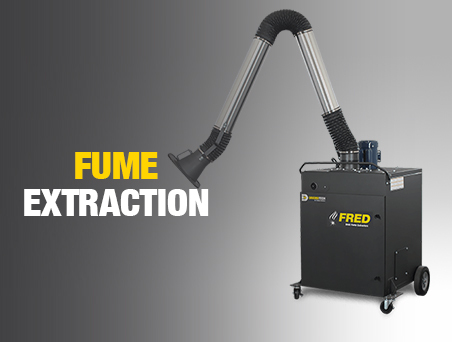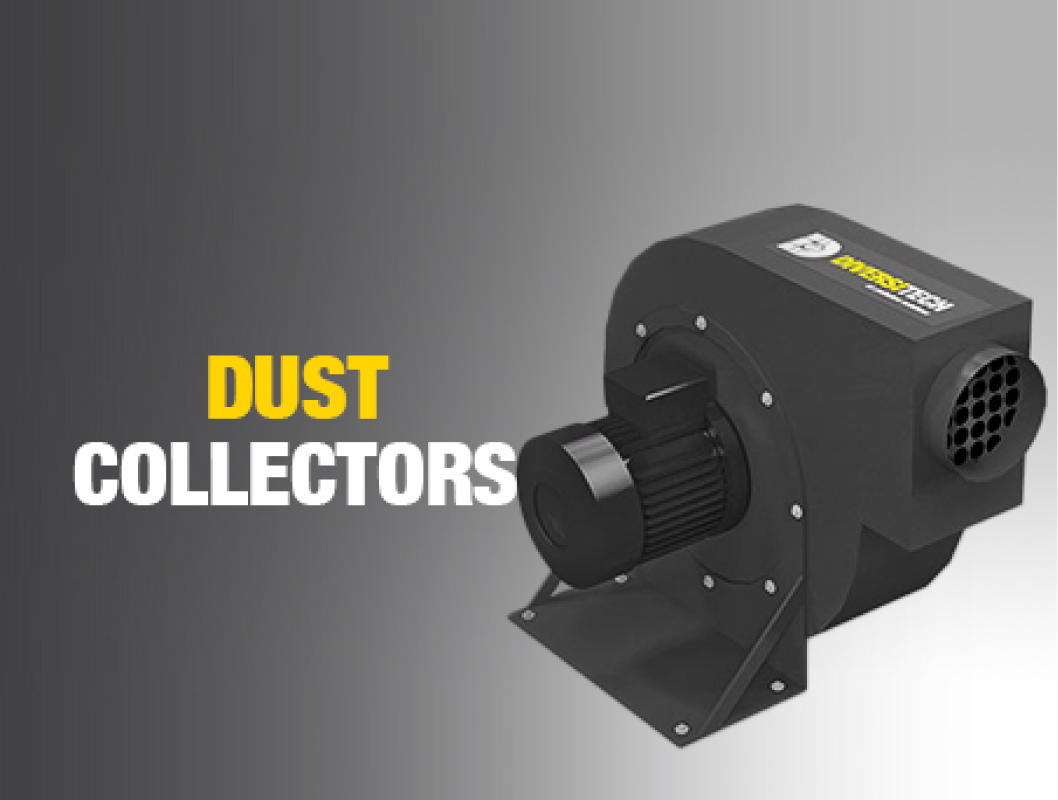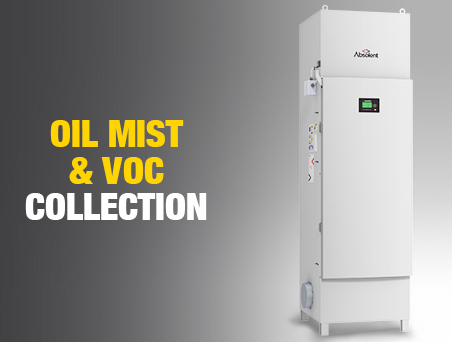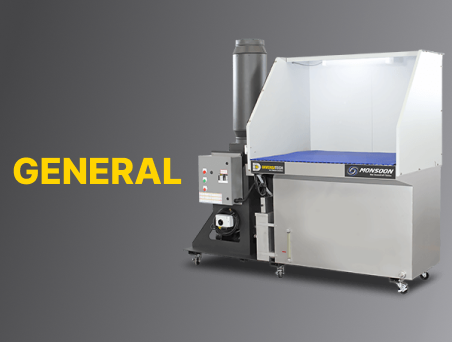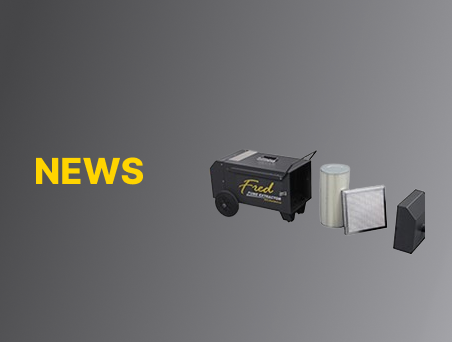For a space mission to Mars, NASA had to come up with a system to manage all the dust on the Red Planet.
That’s right, they get ready to conduct a high-stakes mission that’s literally like 249 million miles away from planet earth and they still have to be concerned about dust particles clogging up their equipment and spacecraft.
In a previous article written on our blog, we talked about this NASA space mission to Mars.
In short, since there is so much dust on the Red Planet, the NASA team was concerned about the accumulation of dust on spacecraft surfaces because this could greatly impact the outcome of missions.
To address this challenge, NASA has engineered an Electrostatic Dust Management (EDM) system, utilizing electrostatic precipitator technology to actively deter and eliminate dust particles from vital surfaces. This innovative approach helps counteract the detrimental effects of dust during space missions, thus enhancing mission success.
Electrostatic precipitation technology, which NASA originally developed for managing dust in space exploration, has also been instrumental in powering industrial dust collector products for decades.
In fact, since Diversitech was established in 1984, the company has effectively utilized this and similar technologies to eliminate hazardous dust, oil, mist, and smoke from various industrial and manufacturing environments. Their solutions cater to industries engaged in welding (including robotic welding), grinding, deburring, laser and plasma cutting, sanding and finishing, painting and coating, soldering and brazing, and numerous other air purification applications.
For a space mission to Mars, NASA had to come up with a system to manage all the dust on the Red Planet.
That’s right, they get ready to conduct a high-stakes mission that’s literally like 249 million miles away from planet earth and they still have to be concerned about dust particles clogging up their equipment and spacecraft.
In a previous article written on our blog, we talked about this NASA space mission to Mars.
In short, since there is so much dust on the Red Planet, the NASA team was concerned about the accumulation of dust on spacecraft surfaces because this could greatly impact the outcome of missions.
To address this challenge, NASA has engineered an Electrostatic Dust Management (EDM) system, utilizing electrostatic precipitator technology to actively deter and eliminate dust particles from vital surfaces. This innovative approach helps counteract the detrimental effects of dust during space missions, thus enhancing mission success.
Electrostatic precipitation technology, which NASA originally developed for managing dust in space exploration, has also been instrumental in powering industrial dust collector products for decades.
In fact, since Diversitech was established in 1984, the company has effectively utilized this and similar technologies to eliminate hazardous dust, oil, mist, and smoke from various industrial and manufacturing environments. Their solutions cater to industries engaged in welding (including robotic welding), grinding, deburring, laser and plasma cutting, sanding and finishing, painting and coating, soldering and brazing, and numerous other air purification applications.
Table of Contents:
How it Works: Electrostatic Precipitator Technology
An electrostatic precipitator (ESP) is a device used in industrial applications to remove particulate matter such as dust, smoke, oil mist, and other fine particles from exhaust gases.
Diversitech just launched the exciting new line of electrostatic precipitators called Thunderbolt.
We offer three different sizes in this line, to suit every customer’s needs. Before we discuss more about the products, let’s take a look under the hood to see how it purifies the air and eliminates hazardous oil, mist, and smoke from welding, deburring, and other applications.
Shop the Thunderbolt OMU-600 Electrostatic Precipitator

Here’s How it Works:
Charging:
The first step involves charging the particles in the exhaust gas. This is usually done by applying a high voltage between two electrodes, one of which is charged positively and the other negatively. As the gas passes through the electrostatic precipitator, the particles within it become charged.
Attraction:
Once the particles are charged, they are attracted to the oppositely charged collecting plates or electrodes located within the precipitator. These plates are typically arranged in a series of parallel rows or honeycomb-like structures.
Collection:
As the charged particles move towards the collecting plates, they adhere to the surfaces due to the electrostatic attraction. This process removes the particles from the gas stream and collects them on the plates.
Cleaning:
Over time, the collected particles form a layer of dust or residue on the collecting plates. Periodically, this layer needs to be cleaned to maintain the efficiency of the electrostatic precipitator. This can be done by wrapping the plates or using other mechanical means to dislodge the accumulated particles, allowing them to fall into a hopper for disposal.
By using electrostatic forces to capture and remove dangerous particles from industrial emissions, electrostatic precipitators play a crucial role in reducing air pollution and improving air quality in industrial settings. They are particularly effective for capturing fine particles that may pose health risks and environmental concerns.
As mentioned above, Diversitech offers three levels of our new line of electrostatic precipitators called Thunderbolt.
- The Thunderbolt OMU-600 Electrostatic Precipitator is the smaller and lighter weight (30kg) electrostatic precipitator
- The Thunderbolt OMU-1000 Electrostatic Precipitator, weighing in at (41kg), is the midrange electrostatic precipitator
- The Thunderbolt OMU-2000 Electrostatic Precipitator, weighing in at (66kg), is the most powerful electrostatic precipitator
Let’s consider the smallest machine, the Thunderbolt OMU-600 Electrostatic Precipitator.
This advanced system effectively eliminates hazardous oil, mist, and smoke from the environment with an impressive 99% efficiency rate. It is capable of handling a maximum air volume of up to 600m3/h and is tailored for industrial use. It draws on technology akin to what NASA employed in space exploration to filter particles even at sub-micron levels.
The OMU-600 is engineered for cost-effectiveness, consuming less than 180W of energy, thus
reducing operating expenses. Its compact design ensures it fits into most spaces seamlessly while demanding minimal maintenance. Electrical requirements are 200/240V 50Hz – 1.3 Amp, and its dimensions measure W 625 mm, H 420 mm, D 389 mm.
Summary of Benefits:
- Removes oil, mist, and smoke from the air
- Filters particles down to sub-micron levels
- Tested to 99% efficiency
- Specifically designed for industrial applications
- Low operating costs
Summary of Features:
- Energy efficient: Uses no more than 180W
- Minimal maintenance required
- Compact design fits in most spaces
Various industries, including manufacturing, automotive, aerospace, chemical processing, food processing, pharmaceuticals, power generation, electronics, printing, and textiles, can benefit from utilizing electrostatic precipitators to eliminate oil mist, smoke, and fumes produced during their operations. Whether it’s metalworking, painting, machining, or printing, electrostatic precipitators play a crucial role in maintaining air quality and ensuring worker safety by effectively removing airborne pollutants.
In conclusion, the utilization of NASA technology in the development of Electrostatic Dust Management (EDM) systems has demonstrated its remarkable efficacy in addressing the challenges posed by dust accumulation, both in space exploration endeavors and industrial settings.
The innovative application of electrostatic precipitator technology by NASA not only enhances the success of space missions by actively deterring and eliminating dust particles but also finds significant utility in industrial contexts. Diversitech, a pioneer in leveraging similar technologies, underscores the versatility and effectiveness of electrostatic precipitators in eliminating hazardous pollutants such as oil mist, smoke, and fumes across diverse industries.
With the introduction of the Thunderbolt line of electrostatic precipitators, tailored to varying industrial needs, we have demonstrated the remarkable features and benefits of these systems, ranging from their efficiency and cost-effectiveness to their suitability for industrial applications.
The Thunderbolt line of electrostatic precipitators offers three options, including the OMU-600 model.This compact yet powerful system efficiently removes hazardous particles with 99% efficiency, thanks to its sub-micron level filtering capability. With low operating costs and minimal maintenance requirements, the Thunderbolt OMU-600 ensures air quality improvement while catering to industrial needs.
Shop our line of electrostatic precipitators
Related Products
TYPHOON WX-3000

Thunderbolt OMU

This Thunderbolt OMU-600 Electrostatic Precipitator is the smaller and lighter weight (66lbs) electrostatic precipitator offered by Diversitech
Absolent A•Smoke

FRED Carbo


